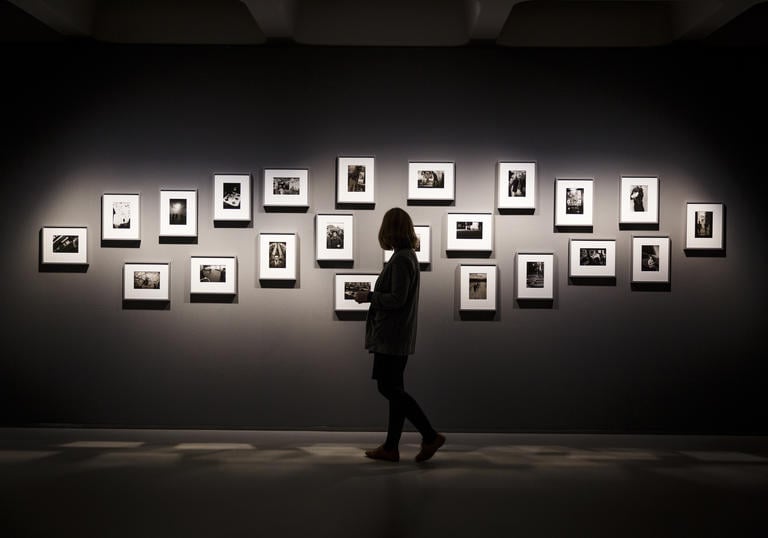Martin Parr has long been an admirer of Larrain’s work. When I started at Magnum Photos, back in 2003, we still had the original contact sheets from Larrain’s London commission casually filed on a shelf near my desk. These were most likely left over from the editing process for Larrain’s London book, published in 1998, which was overseen by Martin with Agnes Sire, Magnum’s first Cultural Director in Paris and now Director of the Henri Cartier-Bresson Foundation. Agnes had a long correspondence with Larrain while at Magnum in the early 1990s and it was her knowledge of this elusive contributor to the agency, that provided the basis for her fantastic monograph and retrospective exhibition of Larrain’s work that launched at the Rencontres d’Arles Festival in 2013, a year after his death and which still continues to tour internationally.
Within the broad documentary umbrella encompassing the work of Magnum’s photographers, Larrain sits firmly in the camp of photographer as ‘artist’.
He looked to Henri Cartier-Bresson as a mentor (it was Henri who welcomed him into Magnum in 1959), and he admired the early work of Bruce Davidson and Josef Koudelka. Rene Burri, who first carried his work to HCB in Paris, after a chance meeting in Rio de Janeiro in 1958, was a long-term friend, as was the British photographer David Hurn.
His artistic nature was expressed through his framing of his subject matter…
There were two sides to Larrain’s work. His documentary of Santiago street children – presented in his publication In the Twentieth Century – a pamphlet currently on show in a section on Latin American protest books in Tate Modern’s rehang, is in keeping with much of the engaged social documentary photography emerging after the Second World War. However, his artistic nature was expressed through his framing of his subject matter and articulated in his book The Triangle of the Hand. Larrain said of the photographic process: ‘the photograph is a kind of miracle that appears in a blaze of light’ and it is this almost mystical approach to photography that dominated his work. A long-term advocate of yoga and meditation, he was to retire in the late 1960s to a rural retreat in Chile, vouchsafing any further commission activity, or approaches for public presentation of his work – becoming a mysterious and withdrawn figure.
Along with those London contact sheets (long since safely returned to the archive in Paris) a little set of 8×10” prints accompanied with signed archival labels was available for Magnum to sell. It was then that I first saw the power of Larrain through the pull this material exerted on collectors in the know who came to our offices. Indeed, some of these prints are now a part of Martin’s own collection and incorporated into this exhibition display. We recently presented a group of predominantly vintage prints of Larrain’s work in an exhibition in the Magnum Print Room. Our exhibition included images of London alongside Valpairasso, the street children of Santiago and works from his travels in South America. It’s quite incredible to think, but this represents the first solo exhibition of Larrain’s work in the UK. This and Larrain’s incorporation into Strange and Familiar will hopefully contribute to the work of this elusive photographer, poet getting the attention it deserves.

